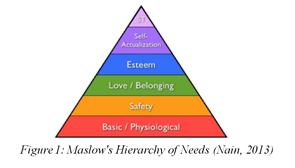Use of Douglas McGregor’s Motivation Theory in Management
Use of Douglas McGregor’s Motivation Theory in Management
McGregor’s Theory
The core assumptions of leadership
proposed by Douglas McGregor (Theory X and Theory Y) help the leaders to
analyze the underlying perceptions and assumptions about the people
Theory X
Theory X and Y models separate
employees into two categories based on two assumptions. People are viewed
negatively in Theory X assumptions: Some people may "inherent dislike for
work and avoid it at all costs; as a result, they must be coerced, controlled,
directed, and threatened with punishment to work." They prefer being
directed, steer clear from responsibility, have low ambition, and seek
security"
Theory Y
The assumptions of Theory Y are the
opposite of theory X. Some people may exert mental and physical efforts for
work equal to amounts exerted at rest or play. Their motivations may not be
influenced only by external factors or external threats to exert such effort. They
can exercise caution, determination and discipline to achieve objectives, but
their hunger or the desire to commit to goals is determined by the size of the
rewards associated with that type of achievement
Significant aspects in Management Approaches
According to Theory X and Y, the
average human being is lethargic and idle, self-centered, lacks vision, rejects
adapting to change, and need to be directed (Dartey-Baah,
2009). A managerial approach may places considerable emphasis on total
control. However, changes in technology and environment, changes in business
models, automation of production processes, and changes in people's thinking
patterns are transforming small organizations into global entities in the
twenty-first century, so that applying rational theories in organizations are
vital for effective work output from human resources (Aithal and Kumar, 2016).
Comparison between Theory X & Y
A comparison between Theory X and Theory Y are shown in figure 1.
Figure 1: Contrast between Theory X and Theory Y
McGregor distinguishes between two management philosophies and contrasts
them to demonstrate their differences. Theory X explains how workers are like
and what sort of steps organizations must take to get the best out of them.
This management theory is founded on three pillars
1. The majority of people dislike working
2. A club must be waved above heads to ensure that they
work
3. Rather than having to think for himself, the average
man would prefer to be told what to do
For innovation to purpose,
management strategies must be adapted to Theory Y variety, by laying the
groundwork for Herzberg's theory to be implemented. The best effectiveness can
be achieved when a person is aware of his or her skills and strong/competent areas
and when they are employed in a work environment which constantly challenges
them, resulting in improvement in skills, an expansion of competence, best outcomes,
and a sense of accomplishment
Case Studies on Douglas McGregor’s Theory
Many studies on Theory X and Theory
Y show that the best organizational approach must be determined by the nature
of the work and the working environment and the structure, because there can be
no single best organizational approach.
Undertaking highly anticipative
tasks outperform the classical approach's highly formal operations and
management strategies. On the other hand, organizations with highly undetermined
tasks that require more extensive critical thinking and problem solving, are
less formalized. Employee of such organizations have greater abilities of
self-control and creativeness, while they actively participate in effective
decision making processes. In essence, these newer studies show that flexibility
must be shown by managerial level in delegating and guiding the employees
References
·
Aithal, P.S. and Kumar, P.M.
(2016) Organizational Behaviour in 21st Century – ‘Theory A’ for Managing
People for Performance. SSRN Scholarly Paper 2816887. Rochester, NY:
Social Science Research Network. doi:10.2139/ssrn.2816887.
·
Ananaba, T. 0. J., 1981. Management by Motivation. Engineering
Management International, 1(1), pp. 63-71.
·
Badubi, R. M.,
2017. Theories of Motivation and Their Application. International Journal
of Innovation and Economic Development, 3(3), pp. 44-51.
·
Dartey-Baah,
K., 2009. Douglas McGregor’s Theoretical Models: Their Application in
assessing Leadership Styles. Academic Leadership: The Online Journal, 7(4).
·
Hattangadi, D.
V., 2015. Theory X & Theory Y. International Journal of Recent
Research Aspects, 2(4), pp. 20-21.
·
Sorensen, P. F.
& Minahan, M., 2011. McGregor's legacy: the evolution and current
application of Theory Y management. Journal of Management History, 17(2),
pp. 178-192.




According to Hackman and Oldham (1974) work on motivation shows' that when employees could see the outcome of their work, they were more likely to be committed to it. Impact means that employees feel that their hard work will lead to desired results. So when the employees seeing that their work will affect customer response to the Bank. When employees realize that their attitude and behaviors will show up in customer attitude and behaviors, these employees are more engaged as they know that what they do makes a difference.
ReplyDelete